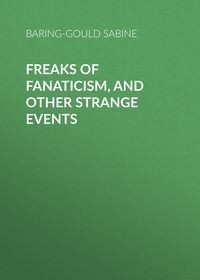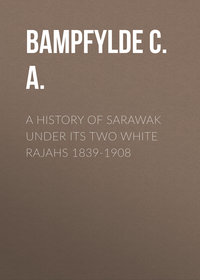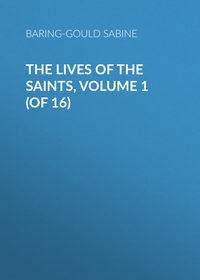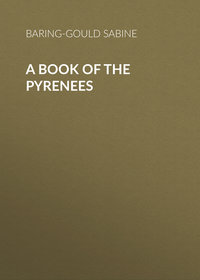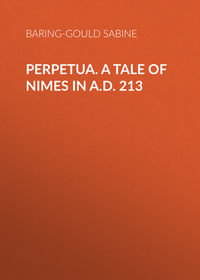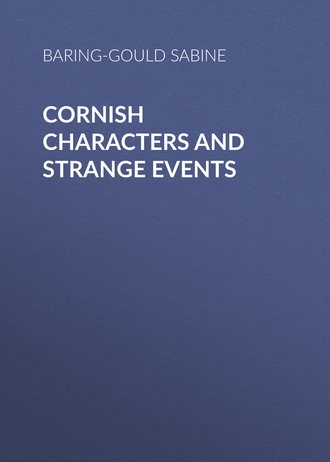 полная версия
полная версияCornish Characters and Strange Events
Full of wrath, Sir William shook off the dust from his feet as a testimony against Exmouth, and departed for London, where he remained two or three days, and then returned to Canterbury.
There he speedily involved himself in difficulties by his exertions in favour of some smugglers. An action had taken place in July, 1833, between the revenue cutter Lively and the Admiral Hood, smuggler, near Goodwin Sands, and in the course of the flight of the latter vessel her crew were observed to throw overboard a great number of tubs, which on being picked up proved to contain spirits. The Admiral Hood was captured, but no contraband goods were found on board; and on the men being taken into custody, Tom presented himself as a witness before the magistrates, and swore most positively that he had seen the whole affair, and that no tubs had been thrown from the Admiral Hood; he further stated that he had observed those which had been picked up by the revenue officers floating about on the water many hours before the Admiral Hood came near the Goodwins. This was so diametrically opposed to the truth that a prosecution for perjury was resolved on, and he was indicted at the Maidstone Assizes on July 25th, 1833. It was then proved that Sir William, on the very day on which the action had taken place, Sunday, the 17th February, had been twenty-five miles distant at Boughton-under-Blean, near Canterbury, and at the very hour of the action had been at church there. A verdict of conviction followed, and Mr. Justice Park, the presiding judge, passed a sentence of imprisonment for three months, to be followed by seven years of transportation beyond the seas.
This having reached the ears of his relations in Cornwall, representations were made by them to the Home Secretary that he was insane, and he was transferred to a lunatic asylum at Barming Heath, where he remained for four years, but whence he still issued addresses to his adherents in Canterbury and interfered in the election of councillors. There he remained for five years, and then a determined effort was made by his father and friends, and by Sir Hussey Brian, to obtain his liberation, and Lord John Russell ordered his liberation. This was an electioneering manœuvre, and Lord John had some difficulty in justifying his conduct in the House when later taken to task for having set this madman free.
On quitting the asylum, Tom hoped to take up his residence with a Mr. G. Francis, with whom he had been on terms of intimacy before. But Mr. Francis was by this time disillusioned, and when the Knight of Malta presented himself before him armed with a new pair of pistols, he remonstrated with him, and ordered him to quit the house; when he went to a cottage hard by occupied by one Wills, who was completely the dupe of Tom, and a passionate agitator. Then he went to Bossenden Farm occupied by a person named Culver. He gave out that he was the true proprietor of many of the finest estates in Kent, but that he would not enter into possession for two years. In addition to his living upon and amongst the farmers, he induced many of them to give him large sums of money, promising that for every shilling lent he would return a pound; and that, when he was in full possession of his estates, all his followers should have land free from rent according to their deserts. These promises made many dupes, and enabled him to indulge in luxuries which excited the astonishment of those not acquainted with his resources, and made many believe that he was what he pretended to be – really a nobleman of large property. To keep up this notion he made presents to various individuals; thus, to a fellow who had been prosecuted by the Revenue, Courtenay gave two horses worth £40. He was fond of displaying himself in fantastic dresses; he allowed his hair and beard, that was coal-black, to grow long; and he taught his followers to roar his battle song, of which only a few verses can be given here: —
Hark! old England's pris'ners' groan —'Tis a deep and mournful tone —From oppression to be free,And enjoy true liberty.ChorusBritons must be – will be free;Truth bears off the victory!Lo! deliverance is at hand;Courtenay's made a noble stand;He the tyrants has arous'd —He has freedom's cause espous'd,Britons must be, etc.Courtenay's cause is good, is just,Safely we in him may trust:Truth and virtue's on his side,We will still in him confide.Britons must be, etc.Men and devils still may rage,Their united powers engage —Infidelity shall fall,Christ shall then be all in all.Britons must be, etc.Slav'ry's chains shall then be broke,We shall soon cast off the yoke,Independence is our right,Victory soon shall crown the fight.Britons must be, etc.Corp'rate bodies then shall cease,They're destruction to our peace;Party spirit shall no moreTyrannize with lawless pow'r.Britons must be, etc.Then, when victory's palm is won,Glorious as the summer sun,Shall Lord Courtenay's cause arise,Showing forth in cloudless skies.Britons must be, etc.Harrison Ainsworth, who has introduced Courtenay into his novel Rookwood, thus accurately describes him: "A magnificent coal-black beard decorated the chin of this worthy; but this was not all – his costume was in perfect keeping with his beard, and consisted of a very theatrical-looking suit, upon the breast of which was embroidered in gold wire the Maltese cross; while on his shoulders were thrown the ample folds of a cloak of Tyrian hue. To his side was girt a long and doughty sword, which he termed, in his knightly phrase, Excalibur; and upon his profuse hair rested a hat as broad in the brim as a Spanish sombrero. Exaggerated as this description may appear, we can assure our readers that it is not overdrawn."
He now resumed his rambles round Kent, and visited the cottages wherever he went, giving himself out to be Jesus Christ come back on earth to sift the wheat from the chaff before setting up his millennial kingdom. He showed his hands and feet and side marked with red – but there must have been conscious fraud on his part, for after his death no such scars could be found. Many of the poor and ignorant believed in him and followed him. His head-quarters were for a while the house of one of his most devoted followers named Wills, but he presently left that and removed to a farmhouse at Boughton, where lived a farmer called Culver, who was also a believer. He infatuated the women even more than the men, for he was tall, dark, and handsome, and they took up his cause passionately, and urged their husbands and fathers to follow him, "because he was the very Christ, and unless they adhered to him fire would come down from Heaven and consume them."
Instances occurred, and that by no means infrequently, in which he presented himself to be worshipped as God by the ignorant peasantry.
At length this excitement was destined to be brought to a conclusion.
On Monday, May 28th, 1838, Tom, with about fifteen followers, sallied forth from the village of Boughton without having any very distinct object in view, and proceeded to the cottage of Wills. Here they formed in column; and a loaf having been procured it was placed at the top of a pole, which bore a flag of blue and white, upon which a lion rampant was drawn. Wills having joined them, they marched to Goodrestone, near Faversham; and on the way Tom harangued the country people, who came out into the roads. From thence they went to a farm at Herne Hill, where they received food, and then on to Dargate Common. Here, by Tom's orders, all prayed. After this they proceeded to Bossenden Farm, where they rested for the night in a barn.
At three o'clock on Tuesday morning they went to Sittingbourne, and there Tom provided them with breakfast, for which he paid twenty-seven shillings. Thence they marched to Newnham, where, at the George Inn, they received a similar treat. What they went marching for not one of these deluded men seemed to know, unless it were to gather recruits; and in this he was successful. Wherever he went – at Eastling, Throwley, Sildswick, Lees, and Selling – he delivered speeches, made promises, and obtained adherents. Then the whole party returned to Bossenden Farm. Here there was an extensive wood, in which the true Canterbury bell is found. The district is called the Blean, and here a condition of affairs existed that greatly helped on the cause of Tom. In the eighteenth century much of the Blean was taken possession of by a number of squatters, who settled on the ground, then extra-parochial, as a "free port," from which none could dislodge them, and there they remained paying rent to none. Now the poor deluded peasants of the neighbourhood conceived the idea that Tom, or Courtenay, as he had called himself, was the promised Messiah who was come to give to them all lands to be their own, on which each man might sit under his own vine, and that the rich and large-landed proprietors would be cast out and consumed by the breath of his mouth.
During the tramp of these enthusiasts about the country, a farmer named Curling lost some of his labourers, who were enticed away from their work to follow with the rest. Curling at once mounted his horse and went to a magistrate, and procured from him a warrant for the apprehension of Courtenay alias Tom. Nicholas Meares, a constable, and his brother were entrusted to execute the warrant; and on Thursday morning, 31st May, about six o'clock, they hastened to Culver's farm to secure the men. Upon their presenting themselves, Courtenay stood forward, and before Meares could read the warrant shot him dead. He then went into the house, exclaiming to those who were there, "Now am I not your Saviour?" and then issuing from the house again, he discharged a second pistol into the body of Meares, and proceeded to mutilate it barbarously with his sword.
The news of this murder was conveyed to the magistrates, and they proceeded to take steps for the apprehension of Courtenay. But the latter at once called out his men, and they marched into Bossenden Wood, and there profanely he imitated the Last Supper and administered to his dupes in bread and water. This over, a man named Alexander Foad knelt down in the presence of the rest and worshipped him as his Saviour, and demanded whether he were required to follow him in body, or whether he might be allowed to return to his home and follow him in spirit. Courtenay replied, "In the body"; whereupon Foad sprang to his feet, exclaiming, "Oh! be joyful, be joyful! the Saviour has accepted me. Now go on; I will follow till I drop."
Another man, named Blanchard, also worshipped him, and Courtenay then said, in reference to the murder of Meares, "I was executing the justice of Heaven in consequence of the power that God has given me."
At twelve o'clock Tom and his followers shifted their position to an osier-bed, and there he harangued them, informing them that he and all such as believed in him would be invulnerable. He defied the magistrates and all the power of the world: his was the Kingdom of Heaven; and then he advised his followers to take up a position in ambush in the wood. At this time Tom noticed that a Mr. Handley, of Herne Hill, was observing their actions, and Courtenay alias Tom fired at him; but he was beyond the range, and he happily missed his aim.
In the meantime the magistrates had taken steps to put an end to this fiasco. They had despatched a messenger to Canterbury to summon the military, and a detachment of a hundred men of the 45th Foot, under the command of Major Armstrong, was placed at their disposal, and marched to Boughton. As the party of Courtenay was in the wood, the magistrates and the soldiery and the constables marched thither. The wood is of very considerable extent, but was intersected by the main road from London and Chatham to Canterbury, which was cut across by another road, a parish road, at right angles. It was found that the insurgent party was so placed that their front and rear were covered by the roads right and left. The military were in consequence divided; and whilst one party of fifty took the road leading to Canterbury, under the command of Captain Reed, the other was conducted by Major Armstrong, assisted by Lieutenants Bennett and Prendergast, along the road that led to Boulton-under-Blean. Thus the insurgents were placed between two bodies of troops, and their only chance of escape was to retreat in a straight line through the wood. But Tom alias Courtenay had no intention of retiring, and he boldly faced Major Armstrong with the men behind him drawn up, armed with picks and reaping-hooks. He was summoned to surrender, but turned and bade his followers be of good cheer and prepare for conflict. These numbered from thirty to forty men. Courtenay gave the order to charge, and advanced on the soldiers, when Lieutenant Bennett drew his sword and, heading the military, ran forward, and was shot by Courtenay; the ball, entering his right side, passed completely through the body of the young officer, who reeled and fell dead on the spot. At this moment a constable named Millwood sprang forward and felled Tom, but as the madman rose to his feet again, he was struck by a ball from the military, for they had received orders to fire from Major Armstrong, who was on horseback. By the discharge eight men were killed on the spot and several were wounded; but the wretched peasantry fought desperately, till at last dispersed by the charge of the soldiers under Armstrong, and those under Captain Reed taking them in flank, when they scattered and fled through the wood.
In the course of the afternoon twenty-seven prisoners were taken, of whom seven were suffering from wounds, two of whom died shortly after.
Of the party employed in maintaining the law, George Catt, a constable, was shot under a mistaken apprehension that he was one of the rioters; and Lieutenant Prendergast received a contused wound on the head from the bludgeon of an insurgent.
During the remainder of the week the coroner was engaged in conducting the necessary inquiries into the cause of death of the deceased persons. Verdicts of "Wilful murder" were returned in the cases of the constable Meares, and of Lieutenant Bennett, against Courtenay and his adherents; whilst in the case of Catt, the jury found "That he had been killed upon an erroneous belief that he was a rioter."
In the cases of death among the insurgents, the jury found a verdict of "Justifiable homicide."
The coroner conducted the investigations at the Red Lion Inn, Boughton, where the yard was full of the wives, widows, and children of these deluded men; whilst the wounded lay on stretchers, as also the bodies of the slain, in a stable; the prisoners were in a lockup, whence they were brought handcuffed to the tavern to be examined. During the sitting of the jury, two of the wounded men died, and upon their decease being communicated to those outside, they gave vent to their feelings in loud wails. The body of Lieutenant Bennett lay in an upper chamber of the inn. He was but about twenty-five years of age, and had just obtained leave of absence when the news of the outbreak reached the barracks, whereupon he applied and obtained permission to join the party. At the conclusion of the proceedings before the coroner and the magistrates nineteen prisoners were committed for trial. Ten of the rioters had been killed. Out of the prisoners, Meares, a cousin of the murdered constable, Foad, and Couchworth were wounded. Foad was a respectable farmer, cultivating about sixty acres. A woman, Sarah Culver, was kinswoman of the farmer who had first sent to the magistrates. She was possessed of considerable property, and was forty years of age. She had been a devoted follower of Courtenay; but it may be presumed that she, like him, was insane.
On Tuesday, 5th June, the greater number of those who had been killed in the riot were interred in the churchyard of Herne Hill. Amongst these was Tom. Great crowds attended, amongst them his adherents, who were in expectation that he would rise again and confound his enemies. Some apprehensions were entertained lest the mob should use violence to prevent the burial of their late fanatical leader, but the whole affair passed off quietly.
At the Maidstone Assizes on Thursday, the 9th August, 1838, the trial of the prisoners commenced before Lord Denman.
Ten of the prisoners were found guilty of murder and were condemned to death, but were informed that the sentence would be commuted, and their lives be spared. The prosecutions in the cases of the other prisoners were not proceeded with, and they were discharged.
From the admissions of the prisoners, it was ascertained that Courtenay had promised his followers on the following Sunday to lead them to Canterbury, to set fire to the city and to have "a glorious but a bloody day."
Tom had assured his adherents that death had no power over him; that even though he might seem to die he would rise again in a month, if a little water were applied to his lips. Accordingly, for a considerable time after he was buried, the ignorant people waited in lively expectation that he would reappear.
Of the prisoners, Meares and Wills were ordered to be transported for life; Price for ten years. The other seven were to undergo one year's imprisonment with hard labour. A pension of £40 per annum was granted to the widow of Meares the constable.
Good comes out of evil, and one result of this lamentable affair was that attention was drawn to the abysmal ignorance of the peasantry of the Blean, and that schools were at once erected at Dunkirk, to introduce a better knowledge and sense into the heads of the rising generation.
A full account of the whole affair was published at Faversham directly after the event, of which this is the title: "An account of the desperate affray which took place in Blean Wood, near Boughton, Thursday, 31st May, 1838, between a party of agricultural labourers, headed by the self-styled Sir William Courtenay, and a detachment of the 45th Regiment of Foot, commanded by Major Elliott Armstrong, acting under the orders of the County Magistrates, together with the whole of the evidence taken before T. T. Delasaux, Esq., coroner, the Rev. Dr. Bow, N. J. Knatchbull, Esq., and W. C. Fairman, Esq., drawn from authentic documents. With an account of the funerals of the parties."
There is another work, a copy of which is now in the British Museum, and is illustrated with a portrait of Tom, a plate representing the murder of Meares, soldiers entering Bossenden Wood; the scene of action, the "Red Lion," where the bodies lay; the interior of the stable with six of the bodies; Sir William Courtenay as he appeared after the post-mortem examination, and portraits of Tyler and Price, two of the rioters. The title of the work is: "The Life and Extraordinary Adventures of Sir William Courtenay, Knight of Malta, alias John Nichols Tom, formerly spirit merchant and maltster of Truro in Cornwall, being a correct detail of all the incidents of his extraordinary life, from his infancy to the dreadful battle of Bossenden Wood … with facsimiles of that eccentric character, concluding with an accurate account of the trial of the rioters at the Maidstone Assizes. By Canterburiensis. Canterbury: published by James Hunt, and sold in London by T. Kelly, Paternoster Row, 1838."
Passages from the Autobiography of a Man of Kent, edited by R. Fitzroy Stanley (i.e. Robert Coutars) 1866, may be consulted; also The Times for June, 1838.
THE BOHELLAND TRAGEDY
In the parish of Gluvias by Penryn is Bohelland. Fifty years ago there was a ruin here of a roofless house, with the gables standing. Now all that remains is a fragment of wall. Tradition regarding the field in which the house stood is, that it invariably brings ill luck to him who owns or rents it. The way from Penryn to Enys, a lane, leads by it, and the fragment of wall abuts on the lane. Bohelland is not marked on the one-inch, but is on the six-inch ordnance map. Anciently it was called the Behethlan, and Gluvias Church was called Capella de Behethlan under S. Budock.
In the possession of J. D. Enys, Esq., of Enys, is a MS. pedigree of the family to whom Bohelland belonged. It runs as follows: "John Behethlan was seized of lands in agro Behethlan, and had issue two daughters, Margery and Joan, and the said Margery took to husband Roger Polwheyrell, and had issue Nicholas Polwheyrell; the said Nicholas Polwheyrell had issue James Polwheyrell; the said James Polwheyrell had issue Richard, Margery, Joan and Isabel, and the said Richard married Maud Polgiau, and they had issue Nichola, and the said Nichola took to husband John Penweyre, and had issue Thomas Penweyre, who died without heirs. The said Margery took to husband Symon Martharwyler, and had issue Elsota and Meliora. The said Elsota took to husband Nicholas Mantle, now living, and had issue Isabel, who took to husband John Restaden, now living. The said Meliora took to husband Michael John, vicar,36 and had issue Joan, Elizabeth, and Margaret.
"The said Joan took to husband Hugh Sandre, now living. The said Elizabeth took to husband Laurence Michell, now living; the said Margaret took to husband James Curallak, now living. The said Joan, second daughter of the said James Polwheyrell, took to husband John Trelecoeth, and had issue Marina and Joan. The said Isabel, third daughter of the said James, took to husband William son of John Tryarne, and died without issue."
Unfortunately this pedigree does not contain a single date, but we should obtain one approximately by the marriage of Meliora, daughter of Simon Martharwyla, with Michael John, vicar, if we could trace him. With her descended the inheritance of Behethlan to her daughter Joan who married Hugh Sandry.
The story of the Bohelland or Behethlan tragedy is contained in a pamphlet of eight leaves, black letter, and accompanied by rude woodcuts, entitled News from Penrin, in Cornwall, 1618. A unique copy is in the Bodleian Library.
Sanderson, in his Annals of King James, 1656, gives the same story. Sir William Sanderson says that "the imprinted relation conceals the names, in favour of some neighbours of repute and kin to the family," and that "the same sense made him thereon silent also."
Now, according to the story, there were four deaths, one a murder, and two by suicide, and one might expect to obtain these names from the parish register. But this register, which goes back into the middle of the sixteenth century, has the page or pages removed for the burials of 1618; that is to say, from the first days of 1618 to the middle of 1621. This looks much as if the family sought to destroy every trace of the crime.
Hals, in his MS. History of Cornwall, under the head of Gluvias, does not mention Bohelland. There is no help to be obtained from the title deeds of the estate. Our sole clue is the descent in the pedigree. Meliora, who married Michael John, vicar, cannot have done this before the reign of Edward VI, and it is not probable that the marriage took place till that of Elizabeth. They were not married at Gluvias, and Michael John was not the vicar then. Now the pedigree carries down the descent, with possession of Bohelland to John Restadon and his wife Isabel. The name Restadon does not occur in the Visitations of Cornwall. The only other possible owner would be Hugh Sandry and his wife Joan, daughter of the vicar, Michael John. But whether it were either the Sandrys or the Restadons, or some one else, cannot be determined till further light enters on this extremely dark occurrence.
The owner of Bohelland was a man of some consideration and substance, "unhappy only in a younger son, who taking liberty from his father's bounty, with a crew of like condition, that wearied on land, they went roving to sea, and in a small vessel southward, took booty from all they could master, and so increasing force and wealth, ventured in a Turk's man in the Streights; but by mischance their own powder fired themselves, and our gallant, trusting to his skilful swimming, got on shore upon Rhodes with the best of his jewels about him; when, offering some to sale to a Jew, who knew them to be the Governor's of Algier, he was apprehended, and as a pirate sentenced to the gallies among other Christians, when miserable slavery made them all studious of freedom, and with wit and valour, took opportunity and means to murther some officers, got on board of an English ship, and came safe to London, where his misery and some skill made him servant to a surgeon and sudden preferment to the East Indies. There by this means he got money, with which, returning back, he designed himself for his native county, Cornwall. And in a small ship from London, sailing to the west, was cast away upon that coast. But his excellent skill in swimming and former fate to boot, brought him safe to shore, where, since his fifteen years' absence, his father's former fortunes much decayed, now retired him not far off to a country habitation, in debt and danger.



